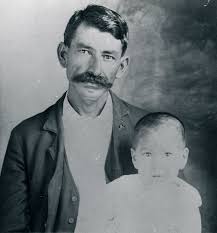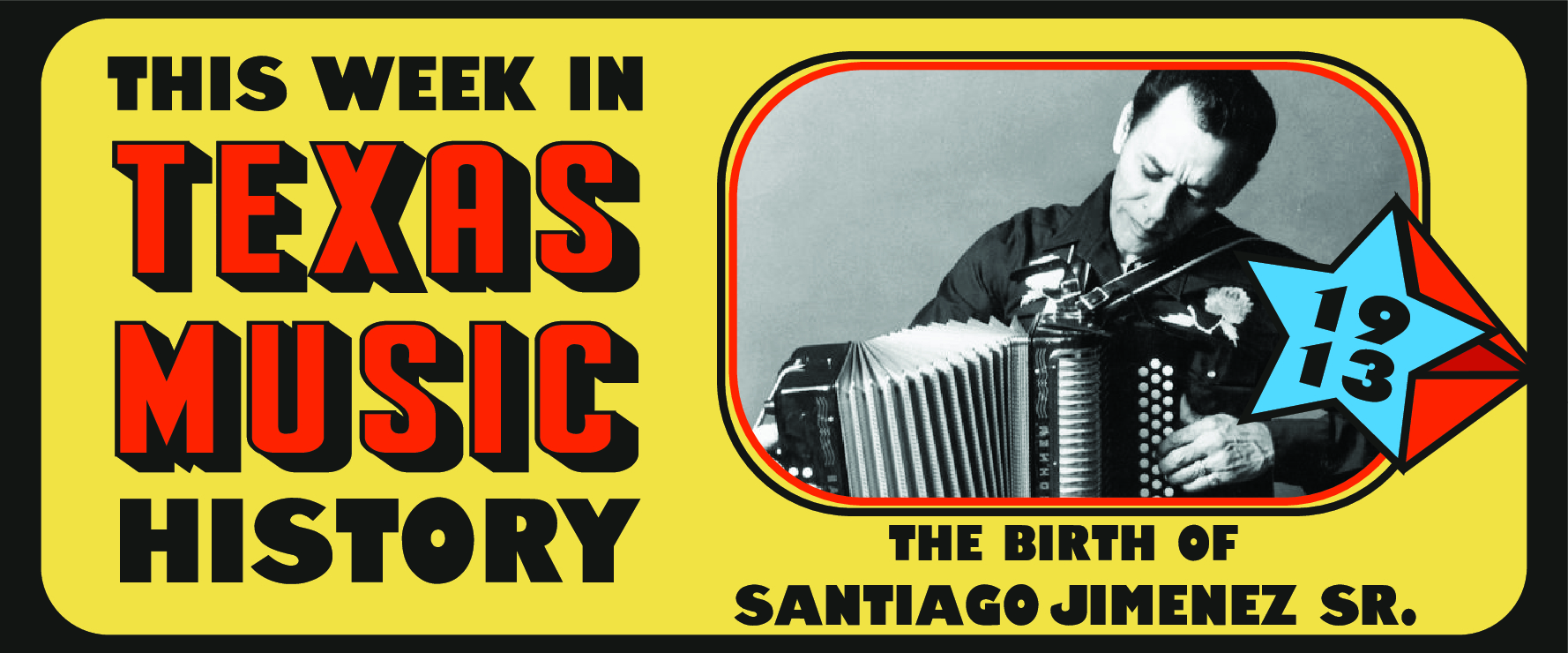This Week in Texas Music History we honor the patriarch of San Antonio’s multigenerational conjunto dynasty.
On April 24, 1913, conjunto accordionist Santiago Jimenez, Sr. was born in San Antonio. The accordion runs in the family. Santiago’s father, from Eagle Pass, was also an accordionist and had Santiago playing the instrument by age eight. Santiago’s sons Flaco and Santiago, Jr., too, would each leave indelible marks on the conjunto genre. As for Santiago Sr., by the 1930s he was playing professionally on San Antonio radio station KEDA and made his first Decca recording in 1936.

Jimenez’s midcentury style blended tradition and innovation, pioneering the use of the tololoche bass as accompaniment while also sticking to the two-button accordion as others moved on to fancier versions of the instrument. Jimenez recorded many of his classic tracks during WWII, including the enduring “Viva Seguin” in 1942, celebrating a town that supported his early performances.

In the 1960s, Jimenez left San Antonio and professional recording for Dallas and other opportunities. His sons, Flaco Jimenez and Santiago Jimenez, Jr., took up the accordion where their father left off, mirroring his particular blend of tradition and innovation. Santiago Jimenez, Jr. championed and preserved the San Antonio style, and his brother Flaco became conjunto’s crossover king, recording with the likes of Dwight Yoakam and the Rolling Stones and forming the Grammy-winning supergroup the Texas Tornados with Doug Sahm, Augie Meyers, and Freddy Fender. To catch the history of these generations of Jimenez accordions in action, there are few better starting points than the classic 1976 Les Blank film Chulas Fronteras chronicling the musical traditions of South Texas.
Sources: Manuel Peña. Música Tejana: The Cultural Economy of Artistic Transformation. College Station: Texas A & M University Press, 1999.
Jill S. Seeber in Laurie E. Jasinski, Gary Hartman, Casey Monahan, and Ann T. Smith, eds. The Handbook of Texas Music. Second Edition. Denton, TX: Texas State Historical Association, 2012.




